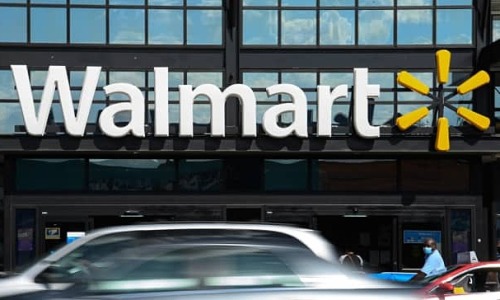Walmart shares soar after reporting exceeding earnings result for the second quarter

As shoppers resorted to the discounter for food and
necessities, Walmart reported on Tuesday that sales increased by more than 8%
but that profitability dropped in the fiscal second quarter.
In premarket trade, shares increased by nearly 3%.
The retailer's earnings exceeded analysts' estimates,
but they were in line with its profit warning from last month, when it said
that consumers who were hurt by inflation were spending more on basics while
purchasing less high-margin goods like clothing.
In comparison to consensus projections from Refinitiv,
Walmart reported the following for the period that ended July 31:
·
$1.77 adjusted earnings per share vs $1.62
projected
·
$152.86 billion in revenue was recorded vs
an expectation of $150.81 billion.
In comparison to the same period a year prior,
Walmart's net income increased to $5.15 billion, or $1.88 per share.
In the second quarter, Walmart U.S. same store
sales increased 6.5% when compared to the same period a year ago, excluding
gasoline. According to StreetAccount, the amount surpassed the 5.9% growth
that analysts had predicted. e-commerce revenues increased 12% year over year
and 18% over a two-year period.
Sam's Club, a membership-based warehouse club owned by
Walmart, experienced same-store sales growth of 9.5%, excluding gasoline,
slightly less than the forecasted 10.1%.
The retailer anticipates
its U.S. same-store sales to increase by roughly 3%, or by about 4%
for the entire year. For the entire year, it expects that adjusted profits per
share will fall between 9% and 11%.
Walmart's sales growth was partially attributed to
inflation, which is raising the cost of food and basic commodities.
According to Walmart's chief financial officer, John David Rainey,
an increasing number of middle- and high-income customers are coming
in because of its reputation as a discount store.
Rainey added that the retailer also notices
signs of a buyer on a tight budget who is compromising "in terms of
quality and quantity." For instance, he cited the growing preference for
credit over debit among consumers. Instead of buying deli meats and beef, they
are choosing to purchase smaller food packages.
“The increasing levels of food and fuel inflation are
affecting how customers spend, and while we’ve made good progress clearing
hardline categories, apparel in Walmart U.S. is requiring more markdown
dollars. We’re now anticipating more pressure on general merchandise in the
back half; however, we’re encouraged by the start we’re seeing on school
supplies in Walmart U.S.” said Doug McMillon, Walmart Inc. president and chief
executive officer.
According to Walmart, U.S., it expected comp
sales, excluding gasoline, to increase by around 6% for the second quarter.
With a greater combination of food and other consumables, higher than previously
anticipated, which is having an adverse effect on gross margin rate.
Compared to the end of Q1, the retailer said food
inflation is double digits and more. Customers' ability to purchase broad item
categories is being impacted, and more markdowns are needed to sell inventory,
notably clothing. The business improved its inventory management, price
management, and storage expenses related to a backlog of cargo containers.
Prices were also adjusted to reflect some supply chain costs and inflation.
Walmart's continuous market share gains are a result of consumers choosing the
company to save money during this inflationary period.


Be the first to comment!
You must login to comment